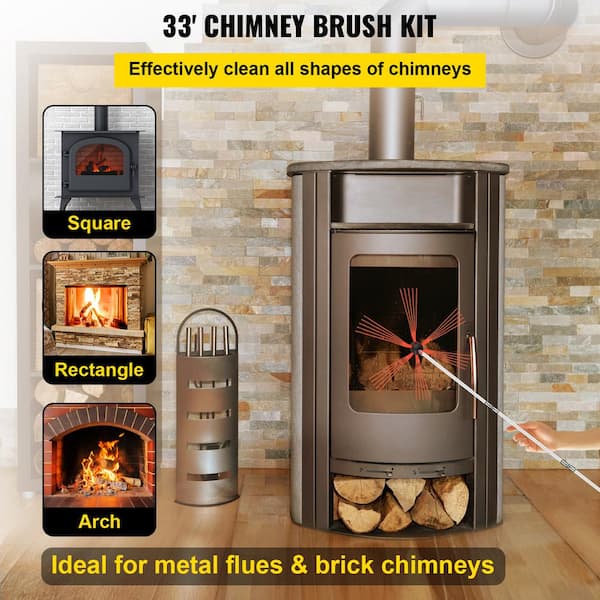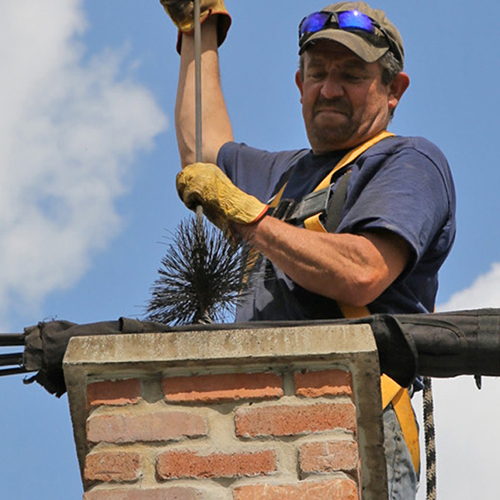Expert Tips for Effective Smokeshaft Maintenance You Required to Know
Chimneys serve as vital parts in numerous homes, offering heat and convenience. From the value of routine inspections to secure functional methods, a comprehensive approach to smokeshaft maintenance is crucial.
Value of Routine Inspections
Normal assessments of chimneys are crucial for ensuring their safety and security and performance. Chimneys play a crucial function in venting out dangerous gases and preserving correct air flow in a home. In time, creosote build-up, debris, and architectural damage can take place within the chimney, posing severe risks such as smokeshaft fires or carbon monoxide leaks.
Throughout a chimney assessment, trained experts evaluate the problem of the chimney, seeking any type of indicators of damage, clogs, or wear and tear. They additionally check the stability of the flue, chimney lining, and smokeshaft cap to make sure every little thing is in correct working order. By recognizing and attending to issues beforehand, prospective risks or costly repairs can be prevented.
Regular evaluations not only help in keeping the safety of the chimney however also add to its general performance. A well-kept and tidy smokeshaft runs more effectively, guaranteeing appropriate air flow and minimizing the threat of interior air contamination. Therefore, scheduling yearly smokeshaft inspections is a proactive measure that property owners can take to protect their building and enjoyed ones.
Cleaning Techniques and Regularity
Keeping the security and performance of a smokeshaft includes not only regular inspections yet additionally carrying out suitable cleaning methods and establishing the ideal frequency for cleaning. Chimneys must be cleaned up by an expert chimney move a minimum of once a year, also if they are not often used. If the smokeshaft is utilized routinely, specifically with wood-burning ranges or fire places, it may call for more constant cleanings to protect against the accumulation of creosote, a highly combustible compound that can lead to smokeshaft fires.
The cleansing process generally involves getting rid of creosote, soot, and particles from the chimney flue, smoke chamber, and firebox. Specialist chimney sweeper use specialized vacuum cleaners, tools, and brushes to make sure extensive cleansing without creating a mess in the home. Furthermore, they inspect the smokeshaft's structure for any kind of signs of damages or put on that might require repair services. House owners should never forget chimney cleaning, as it is important for maintaining a useful and secure smokeshaft system - Chimney Maintenance San Jose. Normal cleanings not only reduce the threat of chimney fires yet additionally improve the smokeshaft's general performance and longevity.
Addressing Chimney Leaks

When resolving smokeshaft leakages, extensive inspection and prompt fixings are essential to stop water damage and preserve the structural honesty of the chimney,. Leakages in a smokeshaft can bring about severe issues such as mold and mildew growth, deterioration of the smokeshaft structure, and also potential fire threats. To efficiently resolve chimney leaks, begin by examining the smokeshaft cap, crown, flashing, and stonework for any type of signs of damage or wear. Smokeshaft caps must be securely in position to stop water from getting in, while the crown and flashing must be undamaged and appropriately sealed. Any type of cracks or voids in the stonework need to be repaired without delay to avoid water seepage. In addition, think about waterproofing the smokeshaft to supply an added layer of security against moisture. Routine maintenance and inspections can help resolve and spot smokeshaft leaks early, conserving you from costly repair work and making sure the security and longevity of your chimney.
Comprehending Creosote Build-Up
To understand the potential hazards of creosote accumulation in chimneys, it is important to recognize its formation procedure and influence on smokeshaft efficiency. Creosote is a brownish or black tar-like material that accumulates inside smokeshaft systems when wood or fossil gas are burned. As smoke increases through the smokeshaft, it condenses and cools down, resulting in the formation of creosote, which sticks to the chimney wall surfaces.

Normal smokeshaft inspections additional hints and cleanings by a professional chimney sweep are important in stopping creosote accumulation and making sure the risk-free operation of your chimney system.
Safe Operation Practices
Executing proper security protocols is vital for the safe and effective procedure of smokeshaft systems. When utilizing a fireplace or wood-burning stove, More hints it is essential to follow details safety and security methods to avoid potential hazards. Always make sure that the chimney is professionally evaluated and cleaned up routinely to get rid of any type of creosote buildup, which can lead to smokeshaft fires. Furthermore, use a tough screen or glass door before the fire place to stop embers or triggers from creating a fire and getting away in your home. It is also essential to never overload the fireplace with too much amounts of timber, as this can lead to overheating and prospective architectural damage.
Furthermore, see to it to just burn seasoned wood in your fire place, as environment-friendly or wet timber can generate even more creosote and cause harmful chimney obstructions. Last but not least, never ever leave a fire neglected and always make certain the fire is totally snuffed out prior to going to sleep or leaving your house. By adhering to these safe operation techniques, you can enjoy a relaxing and warm fire while making sure the safety and security of your home and loved ones.
Final Thought
Finally, keeping your smokeshaft is crucial for guaranteeing its security and efficiency. Regular examinations, correct cleansing techniques, addressing leakages, handling creosote build-up, and following secure operation practices are vital aspects of smokeshaft maintenance. By remaining on top of these jobs, you can prevent possible risks and prolong the life expectancy of your chimney. It is very important to prioritize smokeshaft upkeep to maintain your home warm and secure visit throughout the chillier months.
Over time, creosote buildup, particles, and structural damages can occur within the smokeshaft, positioning serious dangers such as chimney fires or carbon monoxide leaks.
If the smokeshaft is used routinely, specifically with wood-burning ranges or fire places, it may need even more frequent cleanings to stop the buildup of creosote, a highly combustible substance that can lead to chimney fires. (Chimney Maintenance San Jose)
To recognize the potential risks of creosote accumulation in chimneys, it is necessary to recognize its formation procedure and influence on chimney efficiency. As smoke climbs via the chimney, it condenses and cools down, leading to the development of creosote, which adheres to the smokeshaft walls.
Always ensure that the smokeshaft is properly evaluated and cleansed frequently to get rid of any kind of creosote build-up, which can lead to chimney fires.